Čajdžinica Džirlo, Sarajevo
Unmissable Things to Do in Sarajevo
My favourite place in Bosnia and Herzegovina has to be Sarajevo. This fascinating city is relaxed yet vibrant. Vendors sell their handcrafted goods in tiny shops hidden in winding cobbled streets of the old town; pigeons flock to the main market square as children throw bread; Trebevic mountain stands tall over Sarajevo; museums share brutal stories from the recent Bosnian war; architecture contrasts between Austro-Hungarian, Ottoman, communist and war-scarred; friendly locals show intrigue to know where you are from and what you think of their city; aromas of strong coffee or ćevapi greet you at every other street you take, the call to prayer gently echoes throughout.
Sarajevo has the perfect balance between charm and grit with its beautiful old town and its tragic past. With plenty of things to do, Sarajevo has something for everyone, whether you go on holiday for nature, shopping, new cuisines, history or culture.
There are now cheap direct flights from London Luton to Sarajevo with Wizz Air twice a week, making Sarajevo an even more accessible city break.
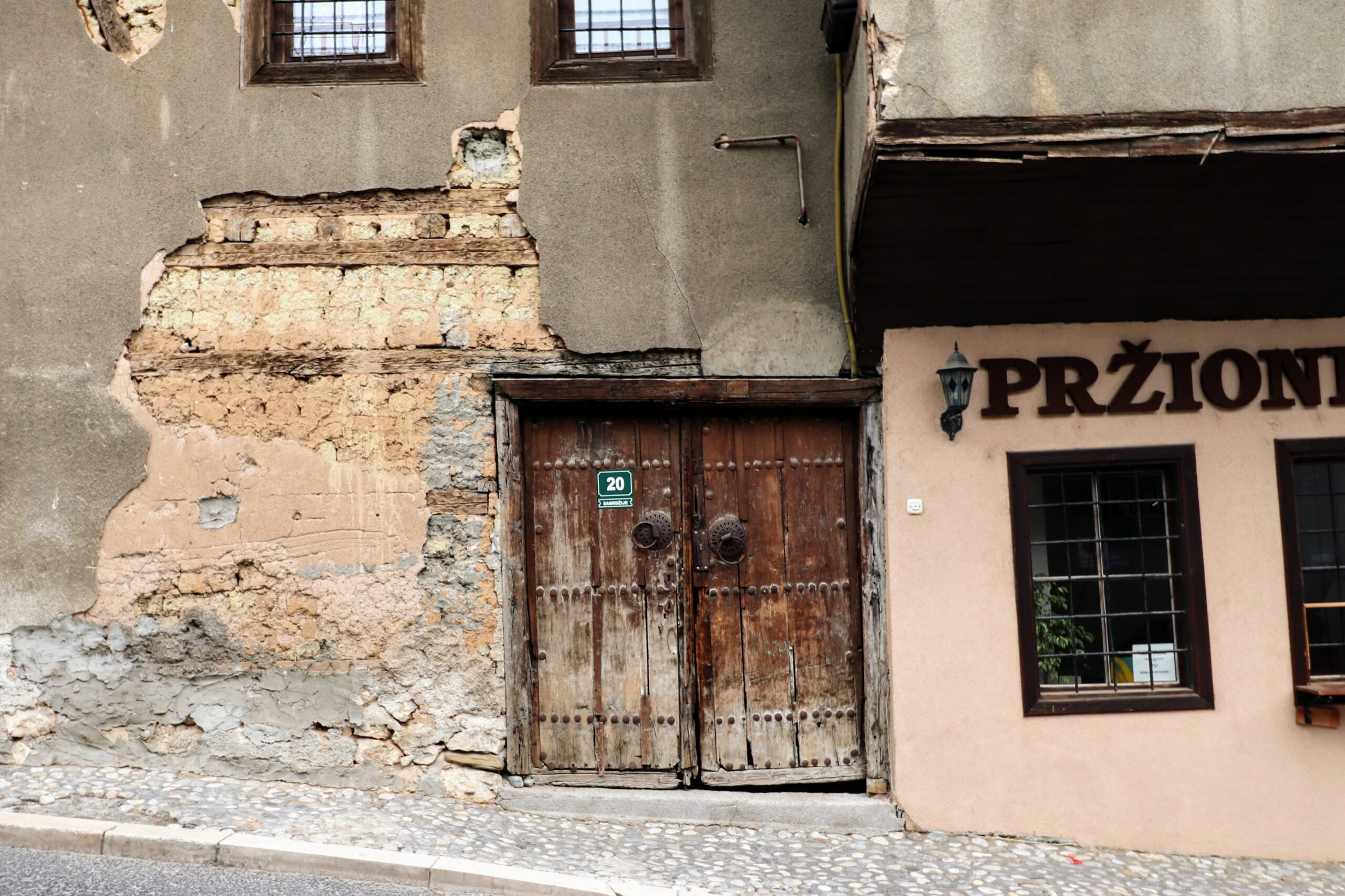
Characterful Sarajevo
Unmissable Things to Do in Sarajevo
Venture through the Tunnel of Hope
Explore the Old Town and Find the Iconic Spots
Vijećnica (or City Hall) and Inat Kuća (or Spite House)
…The Spot where Franz Ferdinand was Actually Assassinated
Ride the Cable Car and Walk down the Abandoned Olympic Bobsled Track
Delve Deeper about the Bosnian War at the Museums
Museum of Crimes Against Humanity and Genocide
Drink allll the Coffee, and Try the Traditional Burek and Ćevapi
Sarajevo’s Back Story
Sarajevo has had a devastating history, most recently the Bosnian War of the 90s. The break-up of Yugoslavia triggered Bosnia and Herzegovina’s quest for independence; unfortunately this did not happen peacefully and created a huge divide between Bosnian Serbs and Bosniaks. Serbian sniper outposts around Sarajevo and the surrounding mountains contributed in the execution of what is regarded as the Siege of Sarajevo.
The war saw ethnic cleansing and mass murder, amongst other war crimes for which there have been convictions in international court. Walking down Sniper Alley, visiting the Tunnel of Hope and Sarajevo’s museums will give you an idea of the bombardment and atrocities on the Bosniak people. The Bosnian War continued for over three years between 92 and 95, and finally ended with the signing of a peace treaty.
Sarajevo (and its people) still bear the scars of the war, but today the city feels happy and welcoming as daily life continues. It seems to me that the places that have been through the most terrible of times, have the warmest and most hospitable people.
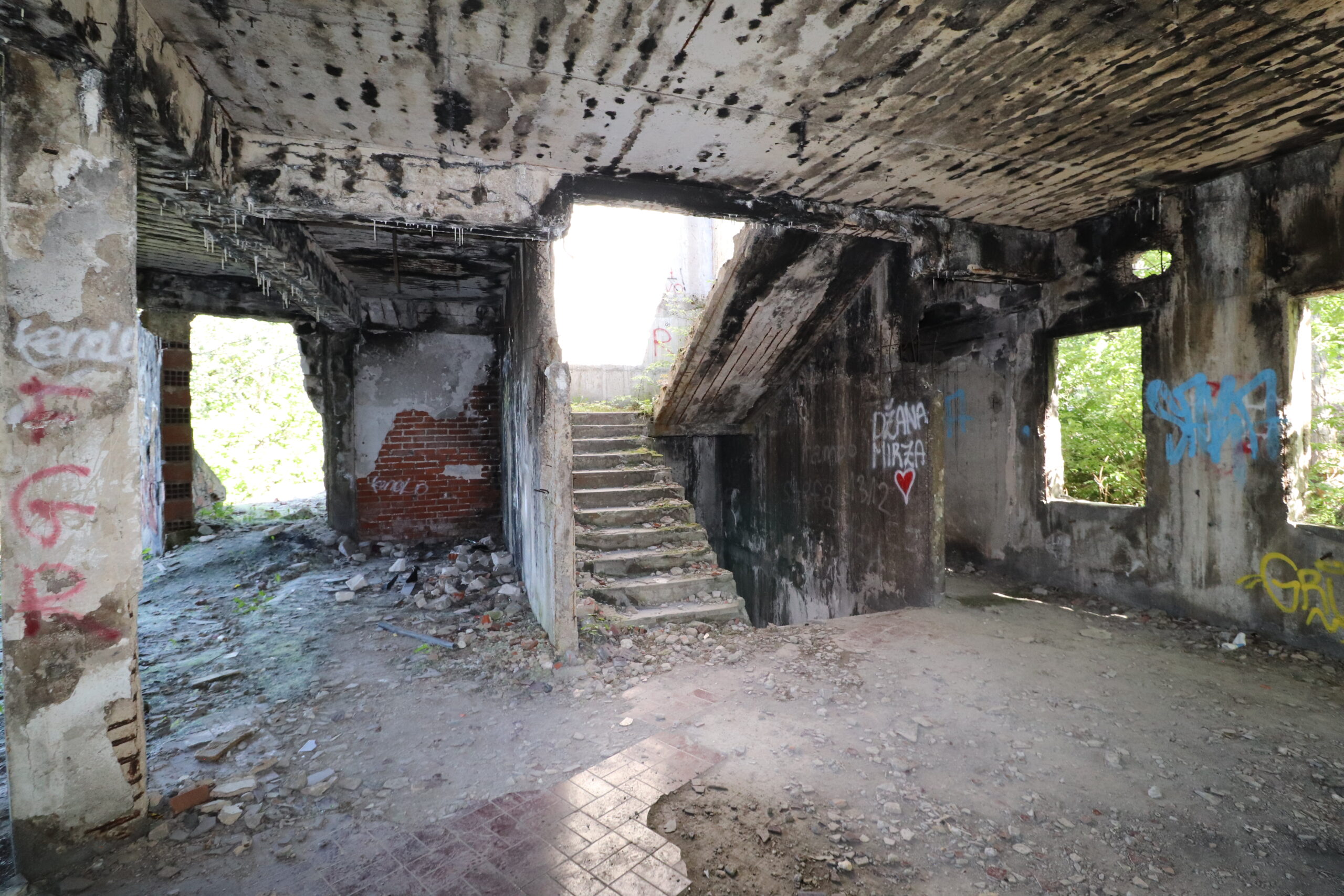
Abandoned sniper base
Venture through the Tunnel of Hope
During the war, the runway at Sarajevo airport was all that separated the besieged city and the free zone held by the UN. People were desperately fleeing across the airport to escape Sarajevo, but were being mercilessly executed by snipers. So instead of going over the runway, they decided to dig under the runway. It took four months and four days for teams on both sides of the airport to dig a tunnel.
The tunnel was 960 metres long, one metre wide, and about one and a half metres high. It enabled the injured to be evacuated, and food, aid and weapons to be brought into the city. Today, you can walk through 25 metres of the original tunnel and a reconstructed part of the tunnel. Tickets cost 10KM.
Afterwards, stop by the gift shop to the right of the museum. It is run by the cutest lady in the whole country! She has magnets, postcards and little bits and pieces of memorabilia. While we were there, she insisted on giving us cherry juice and some of her homemade bread and jam.
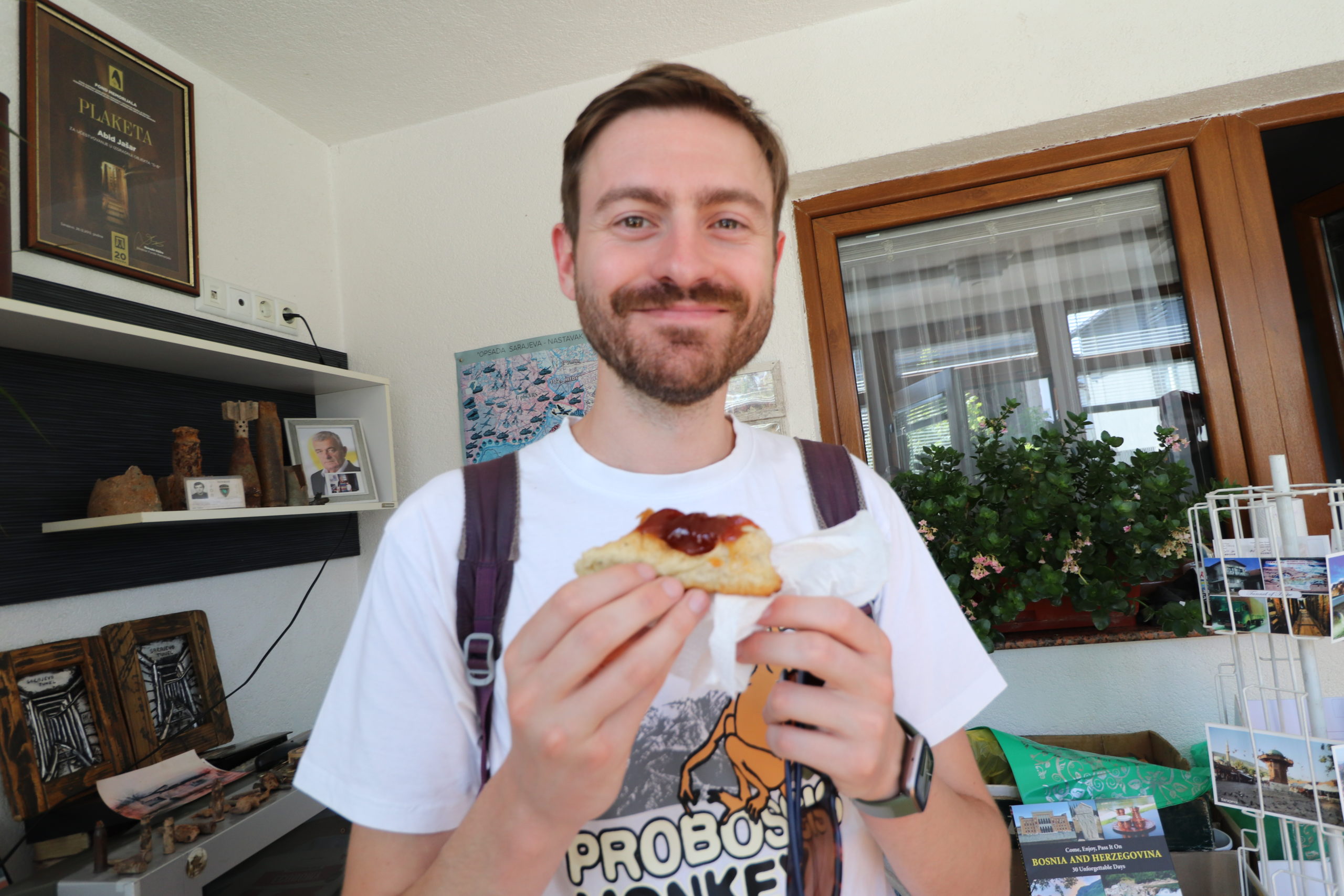
Homemade bread and jam

Inat Kuća (or Spite House)
Take a Tour to the Tunnel
Being near the airport, the tunnel is outside of the main city, so my recommendation would be to find a tour guide to take you there and talk you through it. The real stories from real people are what makes it. We went through Sarajevo Tours with Adis and booked ourselves on to the ‘Siege of Sarajevo’ tour. The tour includes a guide and transportation to the tunnel, abandoned sniper bases in the mountains and a Jewish cemetery. Our guide, Enes, was a child through the war and has so many personal stories to share, that just listening to him talk with such enthusiasm was worth the money.
Siege of Sarajevo – Tunnel of Hope Tour = 25 EUR per person (plus 10 KM entrance fee for the tunnel) and lasts 4 hours.
Find out more about the tour here: Siege of Sarajevo – Tunnel of Hope
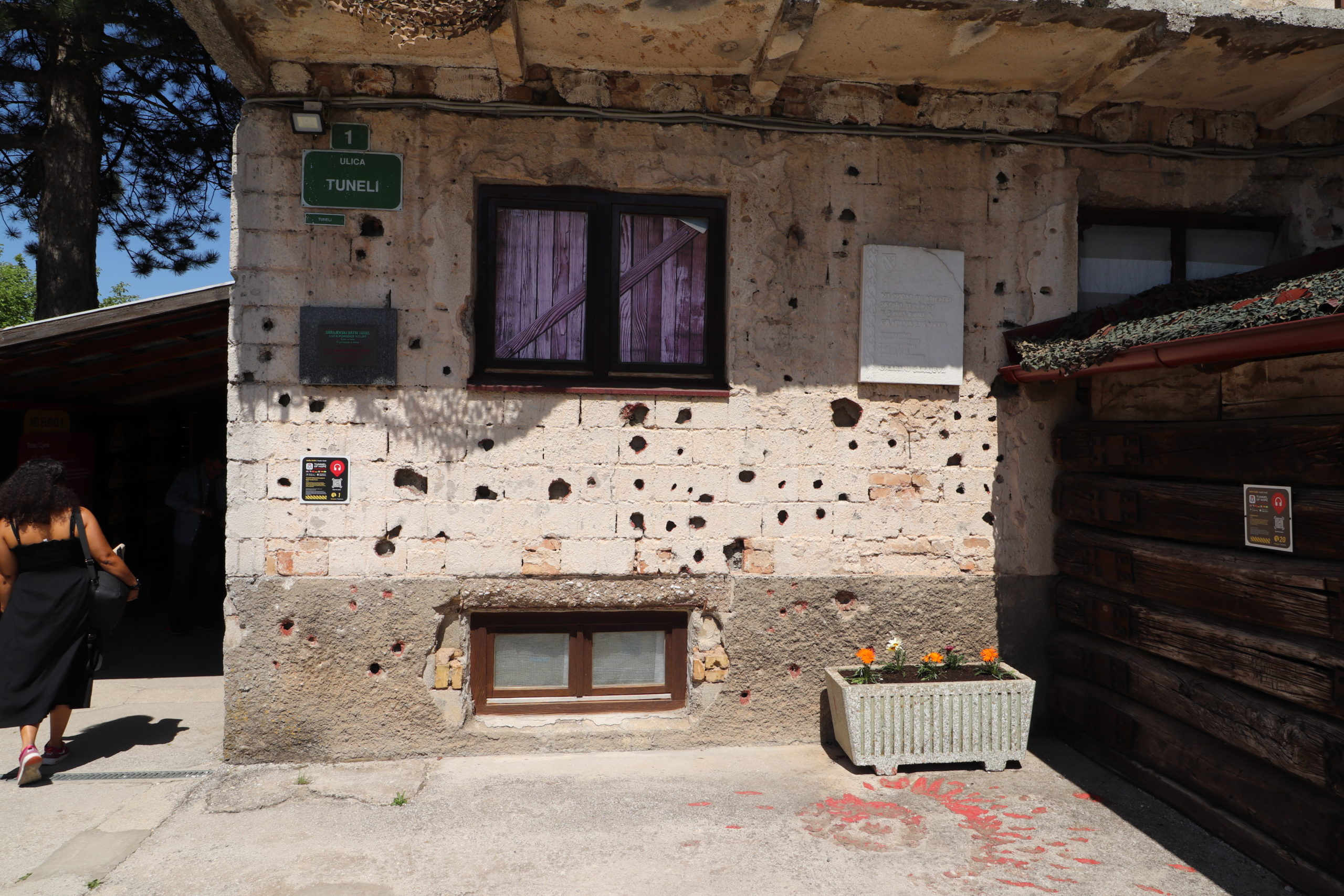
Tunnel of Hope Museum entrance
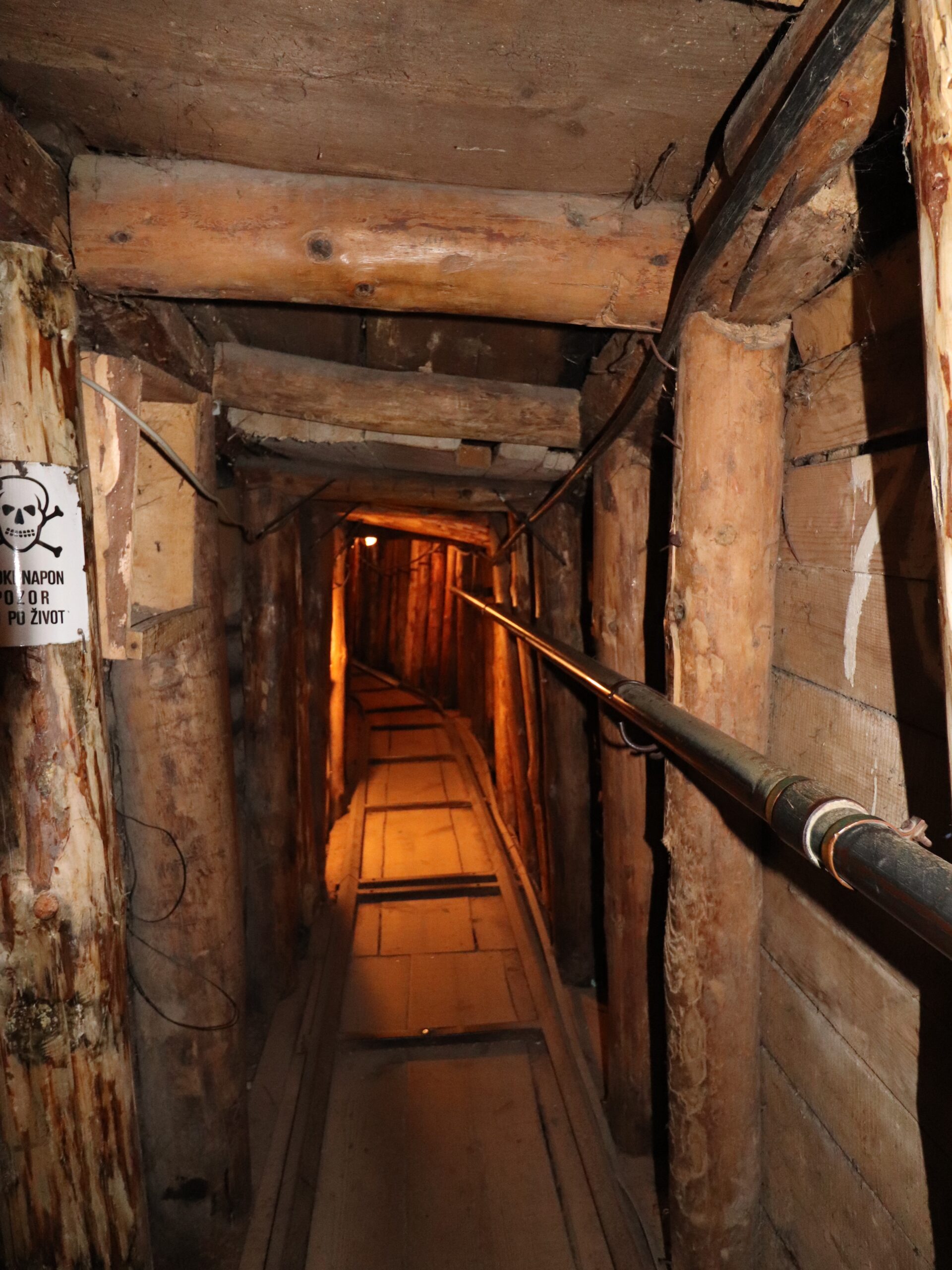
The original section of tunnel

Potato burek
Explore the Old Town and Find the Iconic Spots
Sarajevo’s Ottoman old town and bazaar really feel authentic. Grab your camera and go wandering. Keep an eye out for these top spots.
Baščaršija and Sebilj
Baščaršija and Sebilj is the main market square with iconic water fountain (and plenty of pesky pigeons who will fight you for the crumbs from your burek). You can top your water bottle up here as Sarajevo water is drinkable from the tap.
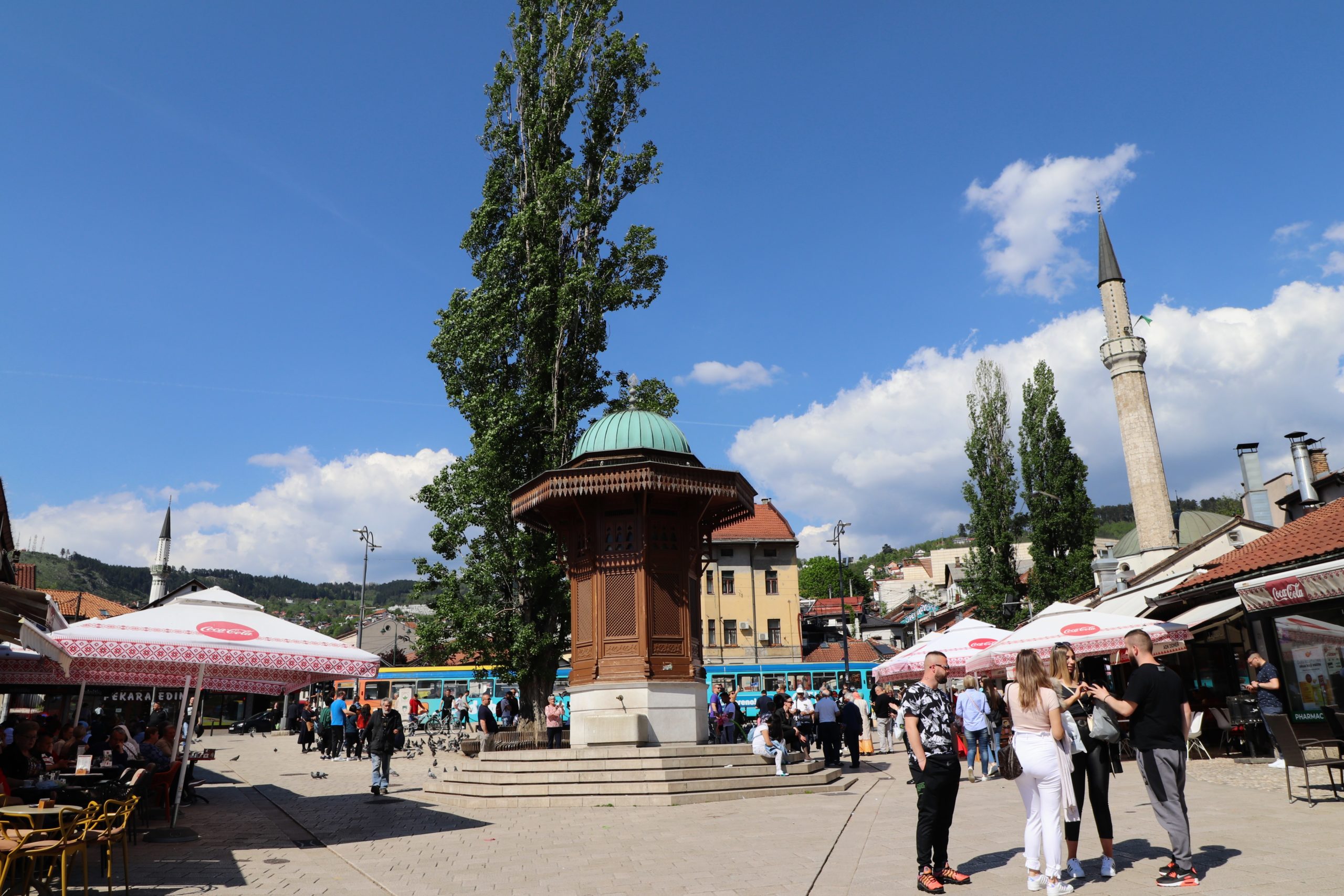
Baščaršija and Sebilj
Vijećnica (or City Hall) and Inat Kuća (or Spite House)
Vijećnica (or City Hall) and Inat Kuća (or Spite House) come hand in hand. Back in the times of Austro-Hungarian rule, the government wanted to build the City Hall in a specific spot right by the river Miljacka, however, there were already many houses there. The government paid the owners to give up their property and everyone agreed, except one. He still wanted to live in his house, so he demanded that, as well as payment, he would have his house moved brick by brick from one side of the river to the other. The government agreed and ‘Spite House’ was born. Nowadays, the building is a restaurant that makes a good potato burek and Bosnian coffee.
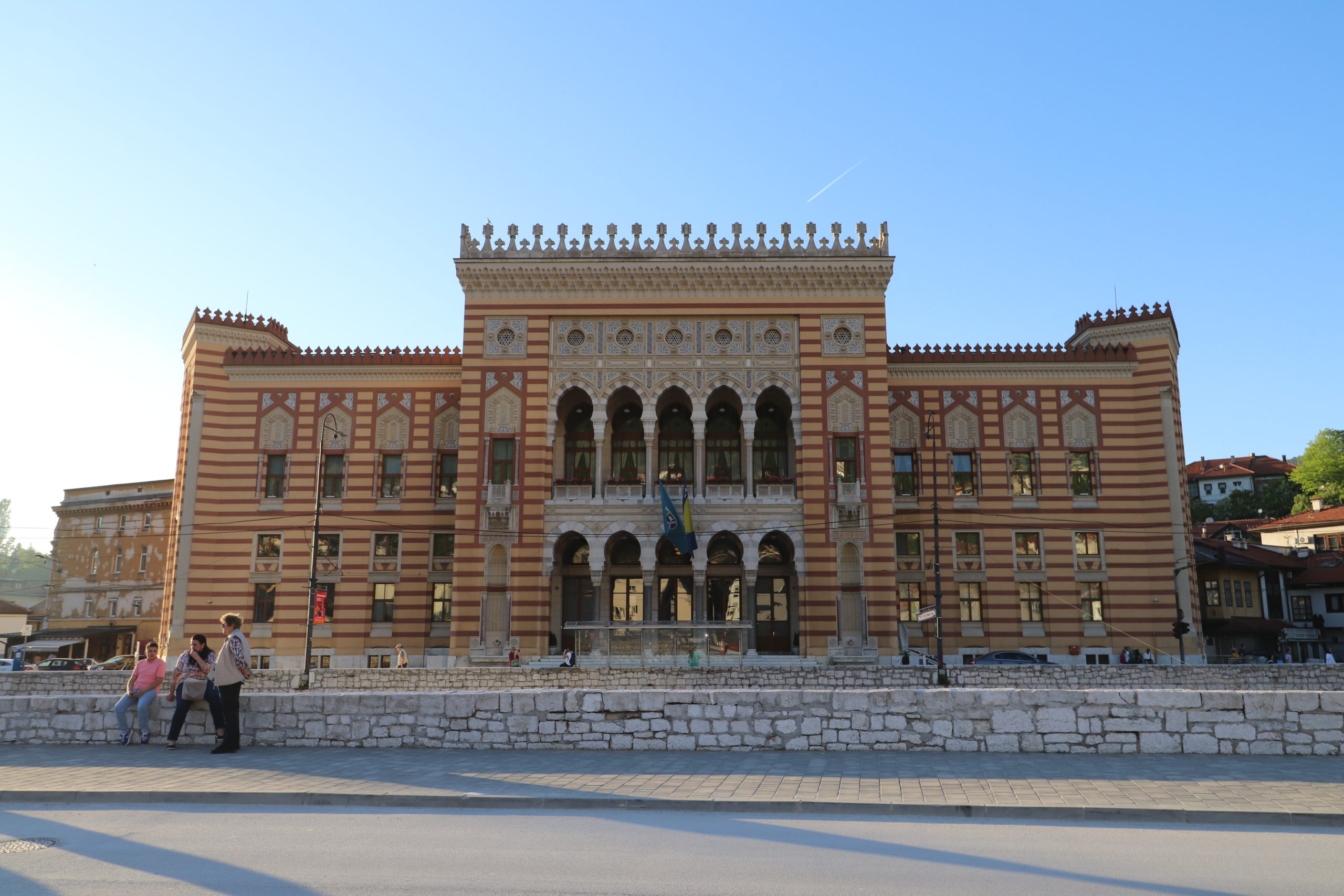
Vijećnica (or City Hall)
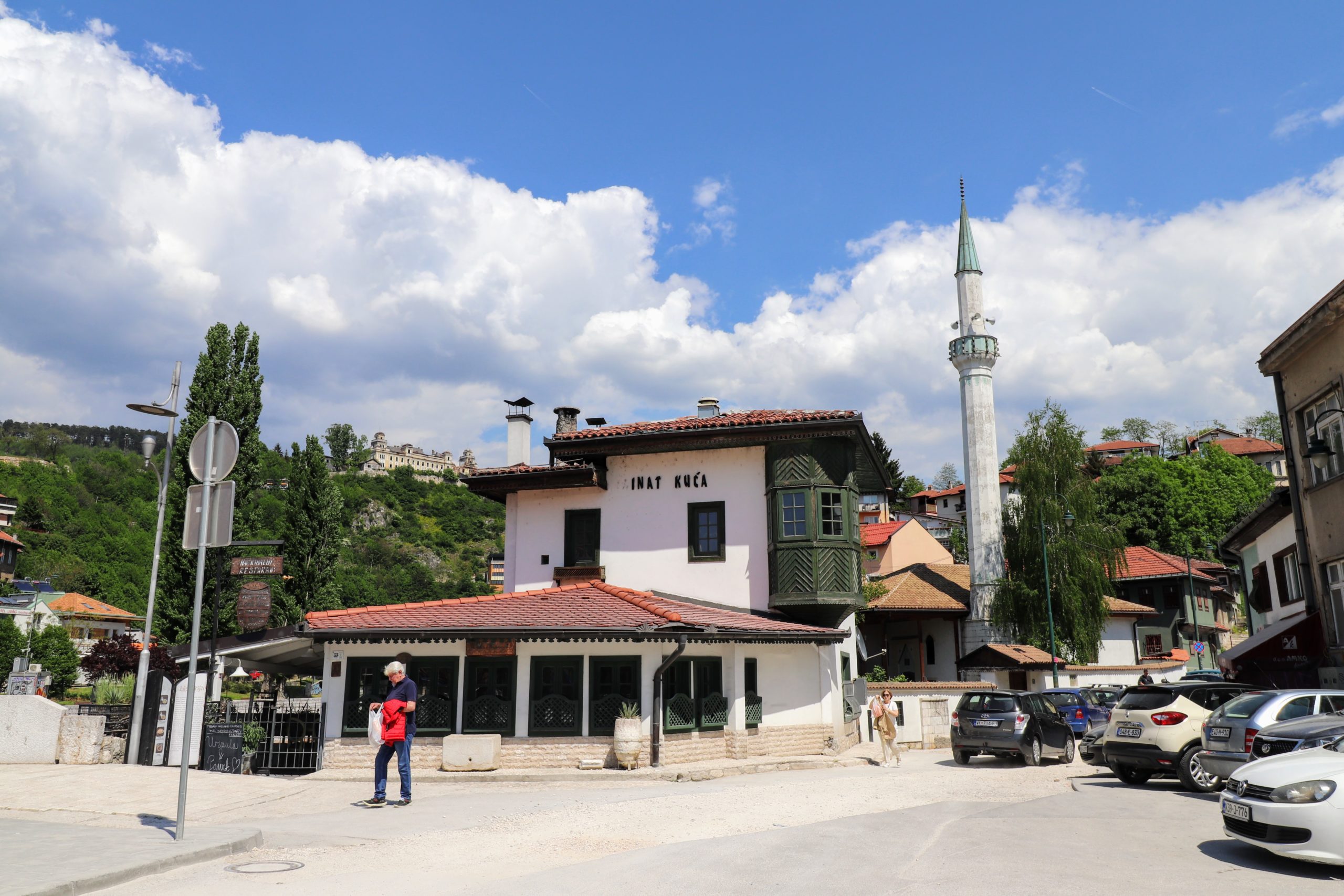
Inat Kuća (or Spite House)
The Latin Bridge
The Latin Bridge crosses the river Miljacka and is famously known as the point where Franz Ferdinand was assassinated by Gavrilo Princip in 1914, triggering the First World War. However, nothing actually happened on this bridge! The assassination took place on a side street nearby, but the Latin Bridge took all the fame, which leads us to…

The Latin Bridge
…The Spot where Franz Ferdinand was Actually Assassinated
Here, you will find a replica of the car that the Archduke was travelling in when he was shot. There is also a plaque on the wall marking the spot.

The spot where Franz Ferdinand was actually assassinated
Coppersmith Alley
Coppersmith Alley is the only ‘something-smith’ alley not destroyed during the war, and still functioning as originally intended. You can buy everything from coffee sets to bullets to spice mills.
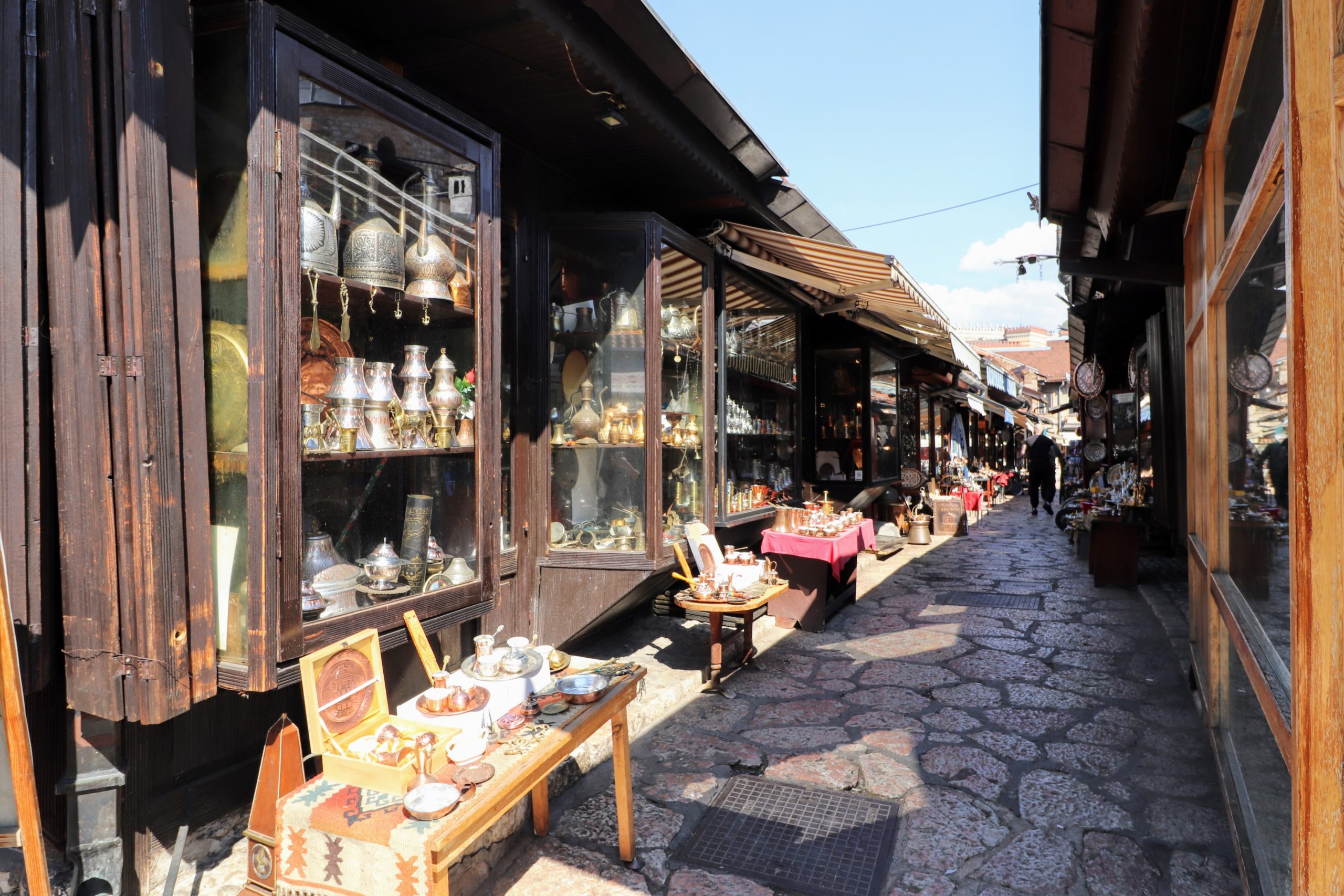
Coppersmith Alley
Gazi Husrev-beg’s Bezistan
Gazi Husrev-beg’s Bezistan is a well-preserved covered bazaar from the Ottoman period. Today, it is still used as a market place, but it’s a tad glitzier than it was back in the day.
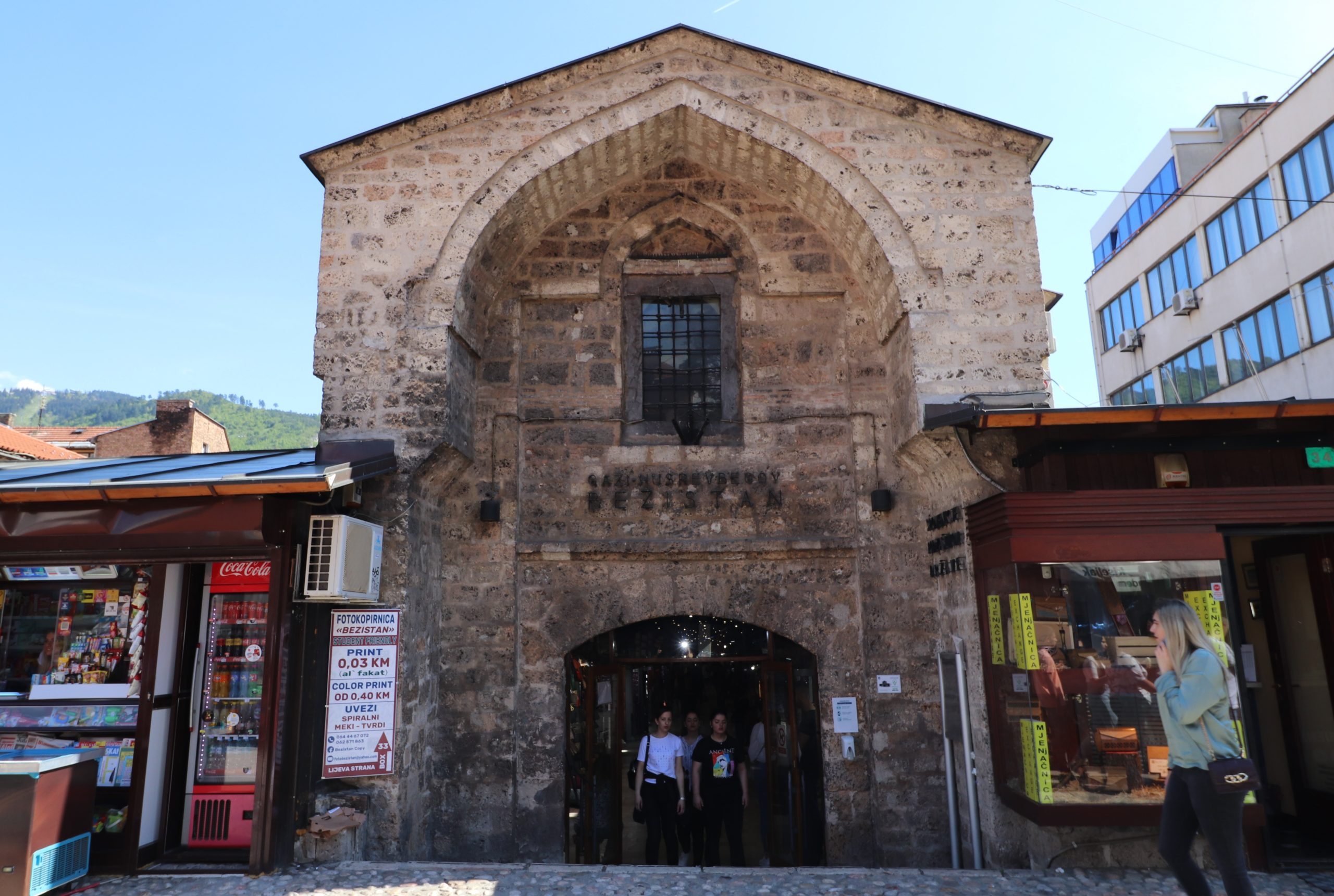
Gazi Husrev-beg’s Bezistan
If you want to learn more about the old town, take a free walking tour with Adis
Adis and his team have so much knowledge about Sarajevo, its history, restaurant recommendations (as long as you don’t ask about vegetarian restaurants – see my post on Sarajevo’s best restaurants for vegetarians), and will take you on a two hour tour to explore all the main sites. The tour is free, but a tip is very much appreciated.
Ride the Cable Car and Walk down the Abandoned Olympic Bobsled Track
A newly renovated cable car takes you to the top of the Olympic mountain, Mount Trebevic. Here, the 1984 Winter Olympics were held. Buy a return ticket for 20KM, or a single for 15KM (you could walk back down to Sarajevo). The journey lasts around eight minutes each way in the cable car. The view by itself is worth the trip, but it is the abandoned bobsled track at the top that steals the show. You can walk down the track and see all the colourful graffiti.

Abandoned Olympic bobsled track
Delve Deeper into the Bosnian War at the Museums
There are several museums detailing the Bosnian War and Srebrenica Genocide in Sarajevo. We went to three and I would recommend them all if you have the time to get a well-rounded understanding of the war and the aftermath.
Galerija 11/07/95
Galerija 11/07/95 feels like an art gallery of pictures from the Srebrenica Genocide all in black and white. There are videos and interviews with people who lived through the war and lost loved ones in the genocide. It is hard hitting and really powerful, and if you only have time for one museum, make it this one.
We spent about an hour here. Tickets cost 12KM plus 3KM for an audio guide.
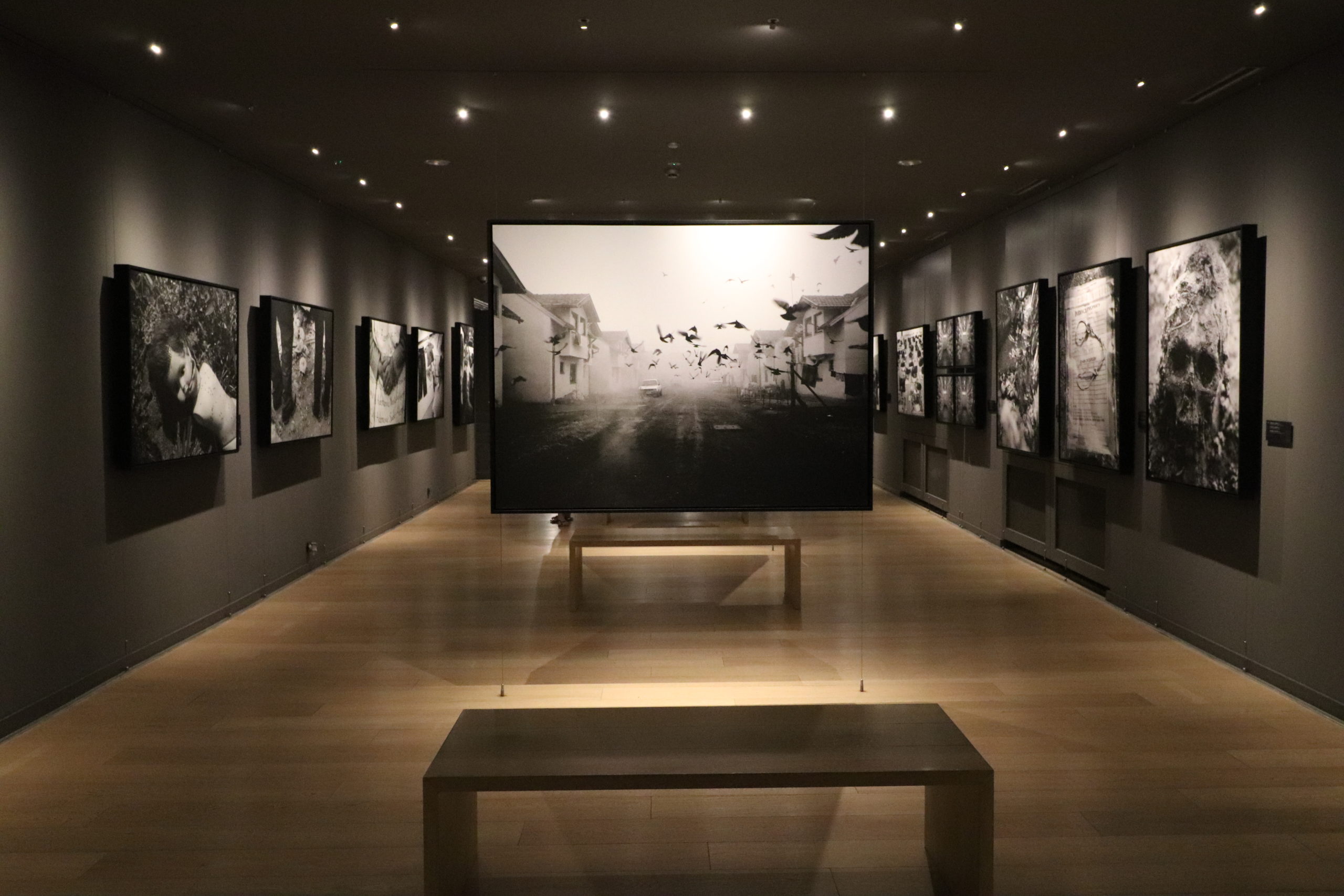
Galerija 11/07/95
Museum of Crimes Against Humanity and Genocide
This museum is arguably more hard hitting than the Galerija. Find personal accounts of atrocities during the Bosnian war. You could spend up to three hours just wandering round reading detailed accounts of experiences of concentration camps, Srebrenica Genocide, failed execution attempts and families who have lost loved ones that are still yet to be found.
Tickets cost 12KM.
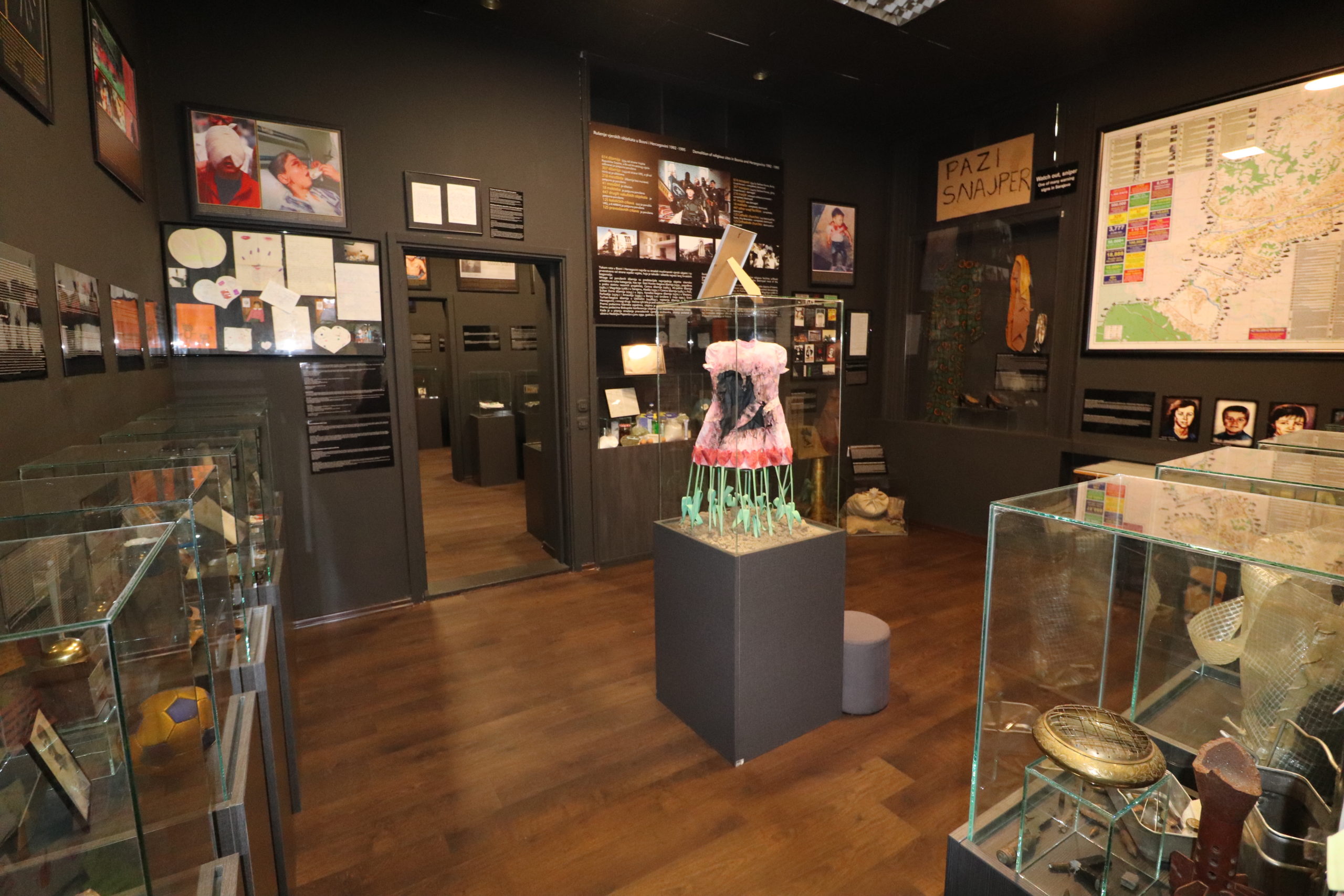
Museum of Crimes Against Humanity and Genocide
War Childhood Museum
Explore a collection of objects from children who have grown up during war. The majority of the examples in the museum are from the Bosnian War, however, you will also see recent additions from Ukrainian children.
Tickets cost 10 KM.
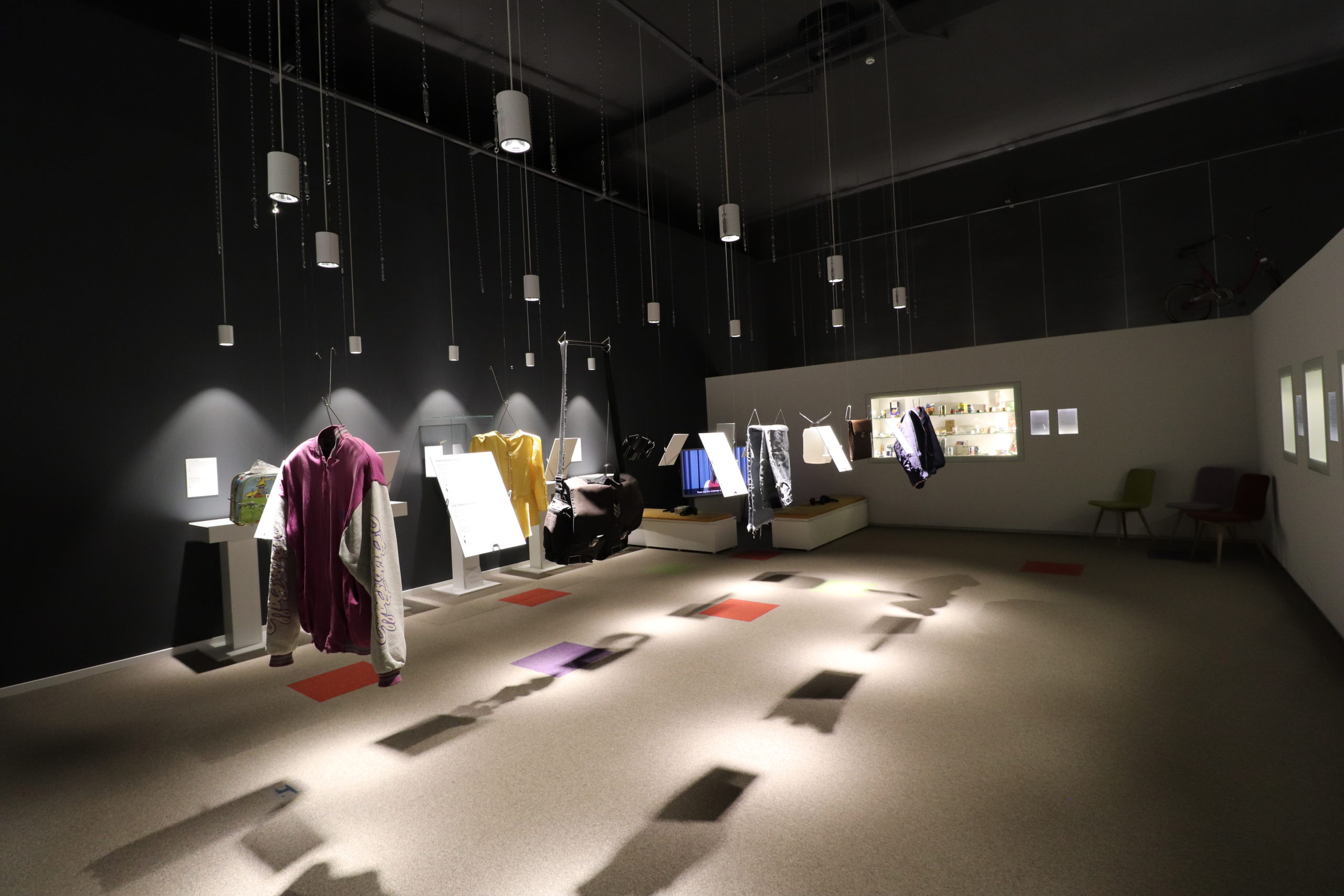
War Childhood Museum
Drink all the Coffee, and Try the Traditional Burek and Ćevapi
The coffee is phenomenal – there are no two ways about it. It is strong, dark, thick and aromatic.
It is served in a traditional copper pot with a long handle for you to pour yourself, a small cup to drink from, a wee spoon, sugar cubes and the Bosnian equivalent of what I know as Turkish delight.

Bosnian coffee
Top tips for Bosnian coffee drinking etiquette:
- Place a sugar cube or two into your cup first and then pour a small amount of the hot coffee on top of the cube to dissolve them. Then pour the rest of your coffee on top.
- Don’t stir the coffee as this will distribute the sandy sediment throughout your coffee (you might get some disapproving looks from locals too). Instead use the spoon to break the layer of thick foam that sits on the top of your coffee pot and pour into your cup.
Coffee goes very nicely with a slab of baklava. Though not strictly Bosnian, it is sold everywhere. Flaky layers of pastry soaked in syrup and different types of nuts.
For more savoury flavours, go for burek: a flaky filo pastry filled with either potato, cheese, spinach or meat. Or the classic meat dish of Bosnia and Herzegovina, ćevapi, is a minced meat kebab with spices and cooked on a skewer. Our tour guide recommended Zmaj, a restaurant a little further out the main city area, but can easily and quickly be reached by tram or trolleybus.
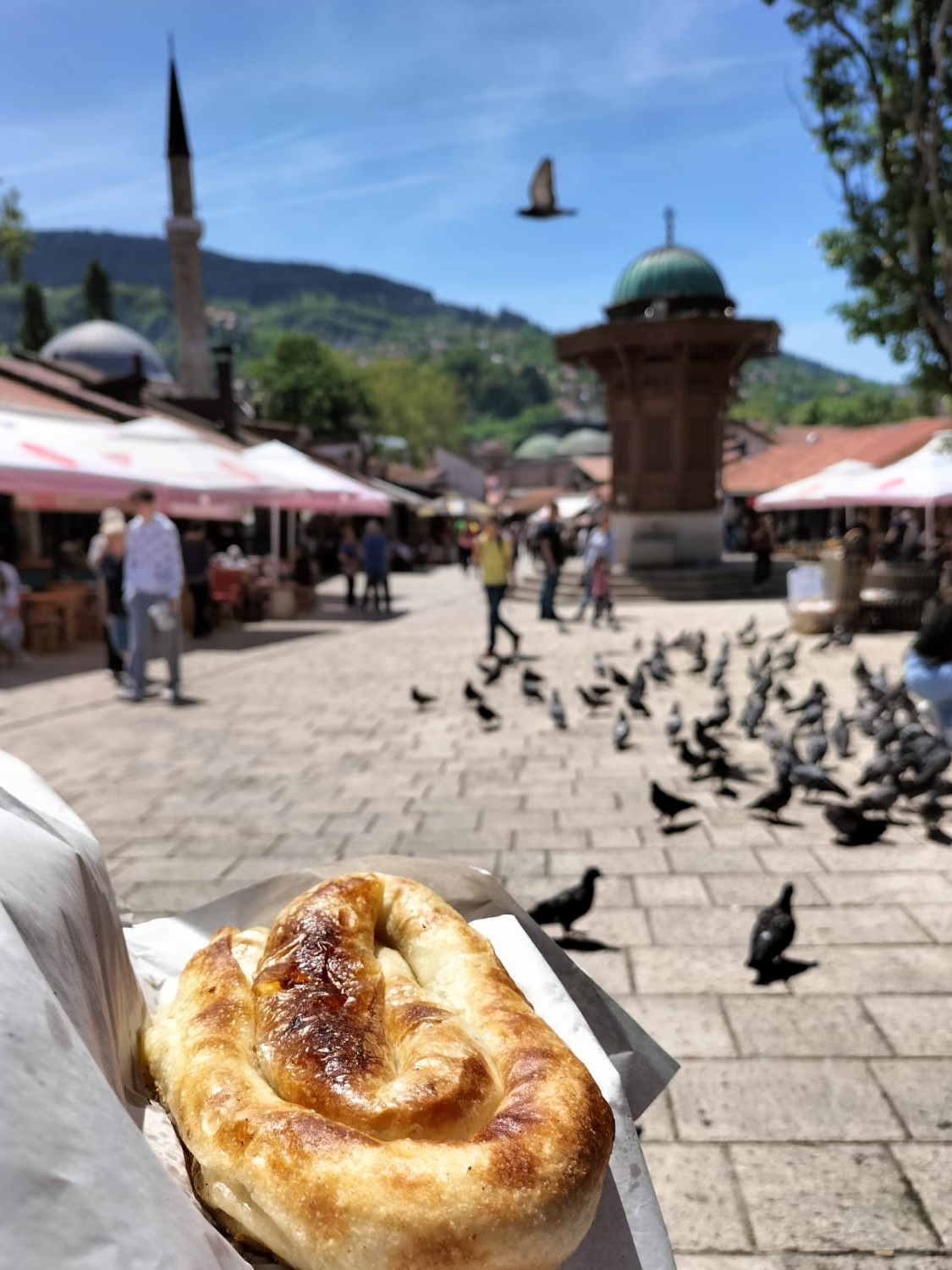
Potato burek
Have you been to Sarajevo? Is there anything that you would add to the list?
I’d love to hear your thoughts, recommendations or questions.
Thanks for reading!
Like it? Save it!


0 Comments